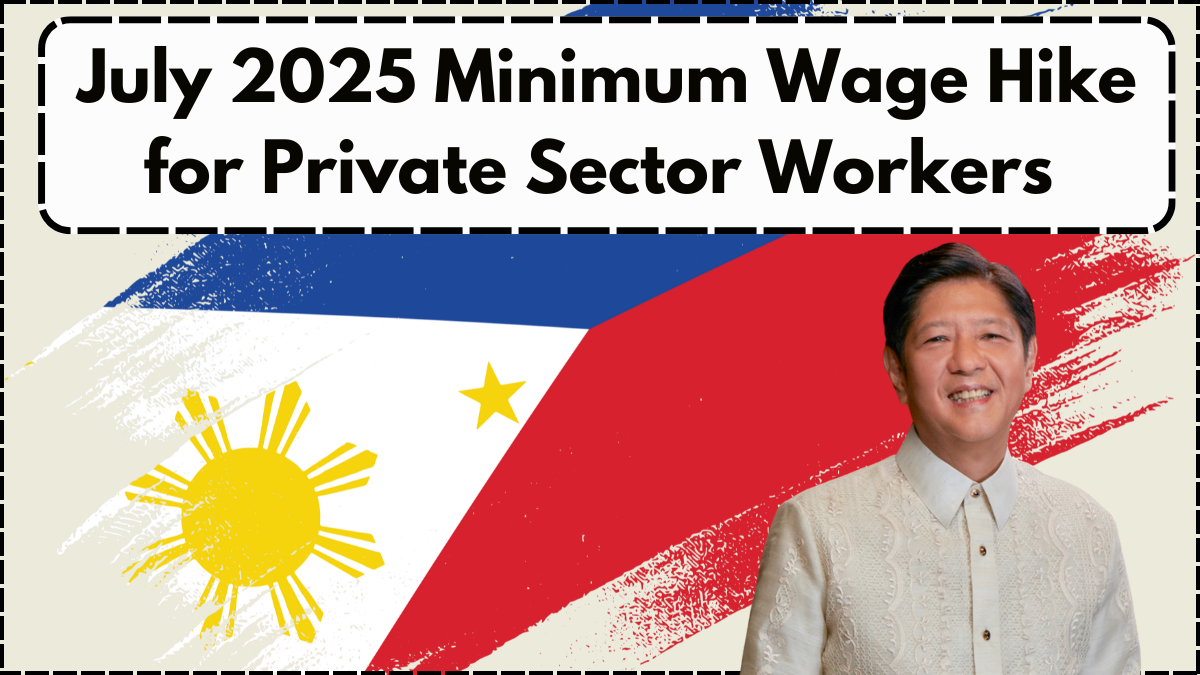The minimum wage in the Philippines is set for another upward adjustment this July 2025. The latest wage order, released by the various regional wage boards, includes significant updates for private sector workers across the country. The National Capital Region (NCR) leads the increase, with other regions implementing their respective adjustments based on local economic conditions.
The wage hike reflects the continued efforts to cushion the impact of inflation, maintain worker productivity, and balance the needs of employers and employees. This article breaks down the minimum wage increase PH July 2025, focusing on the NCR update and a region-by-region list to help both workers and employers stay informed.

NCR Update: What Private Sector Workers Should Know
As of July 1, 2025, the minimum wage in NCR has increased by PHP 35, bringing the new daily rate for non-agricultural workers to PHP 645. This adjustment comes after consultations between labor groups and the regional wage board, with cost-of-living as a central concern.
For workers in retail and service establishments with fewer than 10 employees, the new minimum wage is set at PHP 608, also reflecting a PHP 35 increase. This NCR update is intended to help workers cope with rising living expenses in the capital while keeping small businesses in mind.
Regional Wage Board Actions Across the Country
Each regional wage board has autonomy to assess local conditions and determine the appropriate rate increases. Here’s an overview of the minimum wage hikes across selected regions:
| Region | New Daily Minimum Wage (PHP) | Increase Amount (PHP) | Sector Affected |
|---|---|---|---|
| NCR | 645 (non-agri), 608 (small biz) | 35 | Private Sector |
| Region I | 435–470 | 30–40 | Non-agri and Agri |
| Region IV-A | 520–570 | 25–35 | Private Sector |
| Region VI | 450–500 | 30–40 | Non-agri and Agri |
| Region XI | 460–510 | 25–30 | Various Sectors |
| Region XII | 420–480 | 20–30 | Manufacturing, Service |
Note: Final rates vary depending on province and job classification within each region.
Implications for Employers and Workers
The July 2025 minimum wage increase PH has dual implications. For workers, it means higher take-home pay, potentially improving quality of life and economic mobility. For employers, especially small businesses, it could lead to tighter margins. However, the staggered and region-specific approach by the regional wage boards helps moderate the economic impact.
Employers are advised to update their payroll systems and review employment contracts to ensure compliance. Labor inspectors from the Department of Labor and Employment (DOLE) are expected to monitor adherence to the new wage orders.
Economic Context and Worker Advocacy
This latest hike comes amid a backdrop of steady GDP growth and inflation rates hovering around 4.2% in mid-2025. Labor groups have pushed for higher increases, citing rising costs in fuel, utilities, and basic goods. The government’s response, though more conservative than requested, is seen as a step in the right direction by many advocacy groups.
Economists note that while minimum wage increases can elevate living standards, they should be paired with broader reforms—such as skills training and job creation programs—to ensure long-term sustainability.
What’s Next After July 2025?
Regional wage boards continue to monitor economic indicators and labor market trends. Another wage review may occur before year-end if inflation accelerates or if new economic data suggests the need for another adjustment. Meanwhile, dialogue between labor and employer groups remains open to ensure fair and responsive wage policy.
FAQs
What is the new minimum wage in NCR starting July 2025?
The minimum wage in NCR is now PHP 645 for non-agricultural workers and PHP 608 for employees in small retail and service establishments.
How is the minimum wage determined in the Philippines?
Wage rates are set by regional wage boards based on cost of living, regional economic performance, and consultations with labor and business sectors.
Are all regions getting a wage increase in July 2025?
Yes, most regions are implementing increases, but the amount varies depending on local conditions.
What should employers do to comply?
Employers should adjust payrolls, inform employees, and ensure proper documentation to comply with the new wage orders.
Will there be another increase in 2025?
Another review is possible later in 2025, depending on inflation and economic trends.
Click here to know more.



